Year 1
What we've learned in year 1 of raising and breeding club lambs...
State Fair Insights
Leg wraps, leg wraps, leg wraps, funky fans, and shaving free lamb pens.
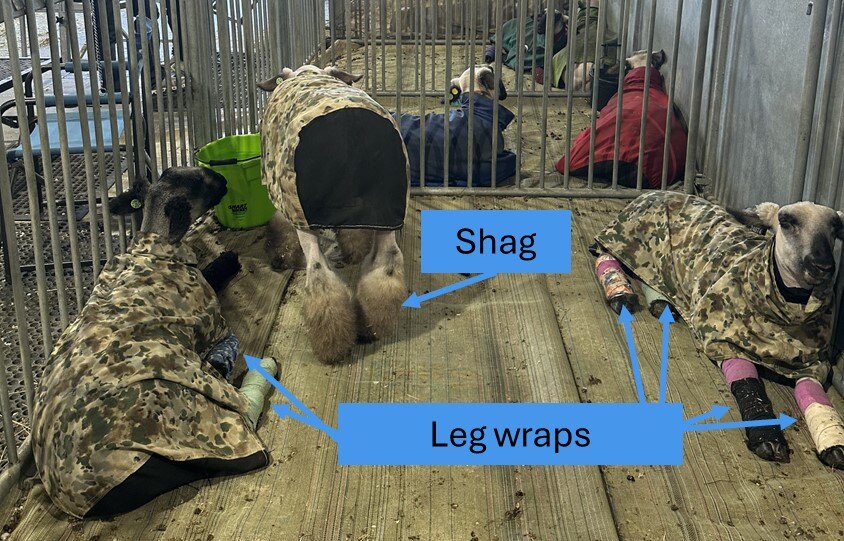
Leg wraps on everything was the first thing that stuck out in the state fair sheep barn. The stated goal is to help the lambs highlight their heavy bone structure by growing long “shag” between their knees and hooves. While this does nothing to improve their value in your freezer, it does make them look cool and helps differentiate exhibitors who put daily hours of care into their sheep from those that don’t.
Leg wraps physically prevent lambs from chewing the wool off their legs. Keeping the wool and skin under a leg wrap healthy requires the exhibitor to perform a daily routine of unwrapping, brushing, washing, drying, and re-wrapping each leg. It’s a real commitment on the part of the exhibitors but makes for some pretty lambs in the show ring.
This funky fan set up sure beats zip tying mom’s box fan to the front of the pen. Combining the ¼ HP air mover’s with the homemade plywood platforms results in consistent airflow over the lambs without interfering with walkways, adjacent pens, or fair goers’ ability to see the lambs. It also adds valuable storage space for feed and buckets and the ability to daisy chain multiple air movers together helps overcome the constant problem of not having enough outlets in a show barn.
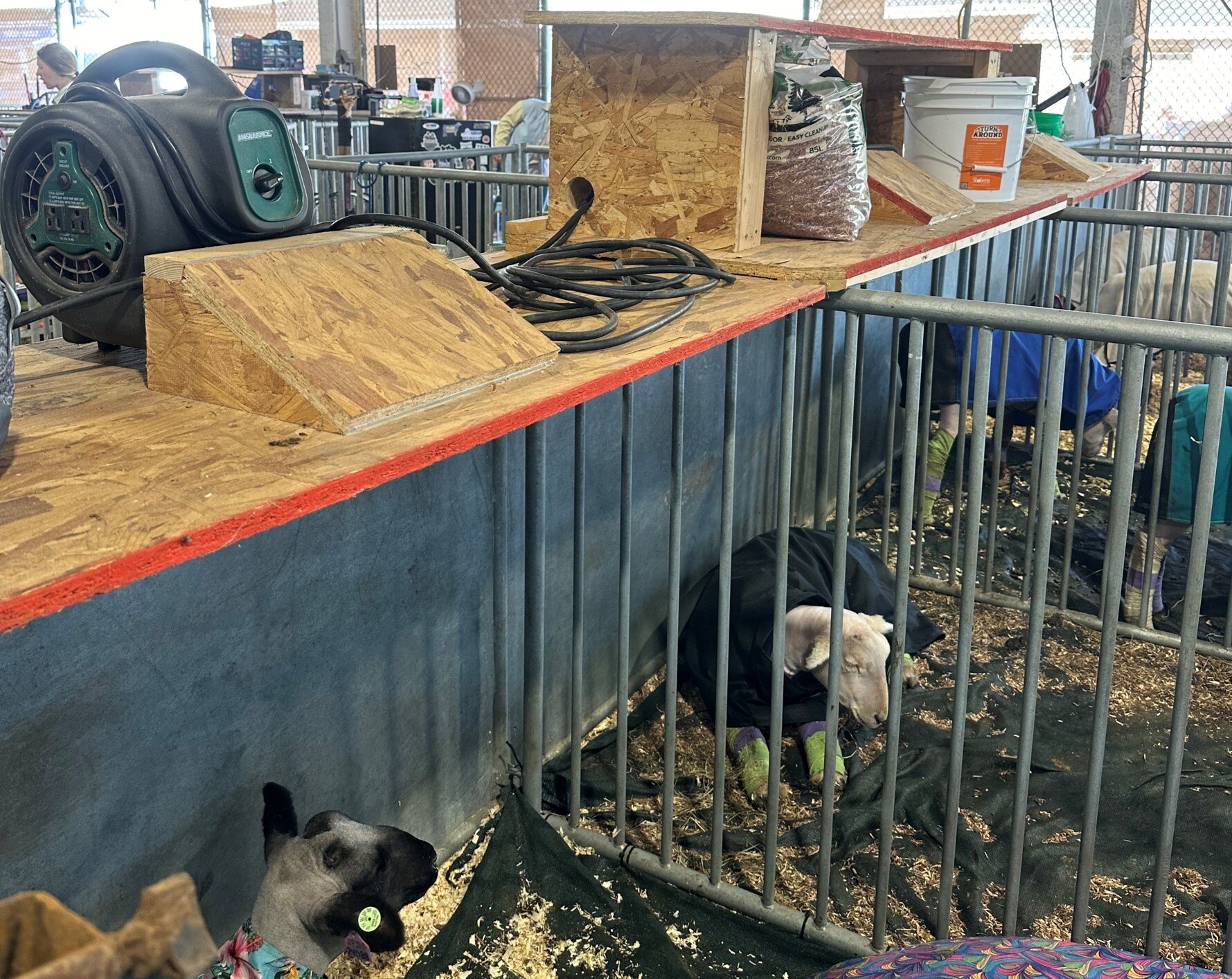
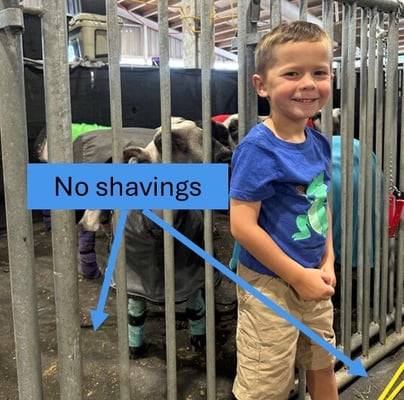
Finally, shaving free lamb pens caught our eye. They might not be as visually pleasing as pens bedded with wood shavings, but at closer look they have some real advantages. First, exhibitors and fair goers don’t need to constantly battle keeping the shavings inside the pen and out of the walking paths. Exhibitors also don’t have to spend time tediously removing shavings from their lamb’s wool before entering the show ring. There’s also a claim that these pens are cooler for the lambs, since airflow isn’t blocked by deep bedded shavings.
Clearly, showmanship practices have evolved since dad last showed lambs 20 years ago .
Breeding season preparations
Shots, shots, shots, shots, shots, shots...everybody!
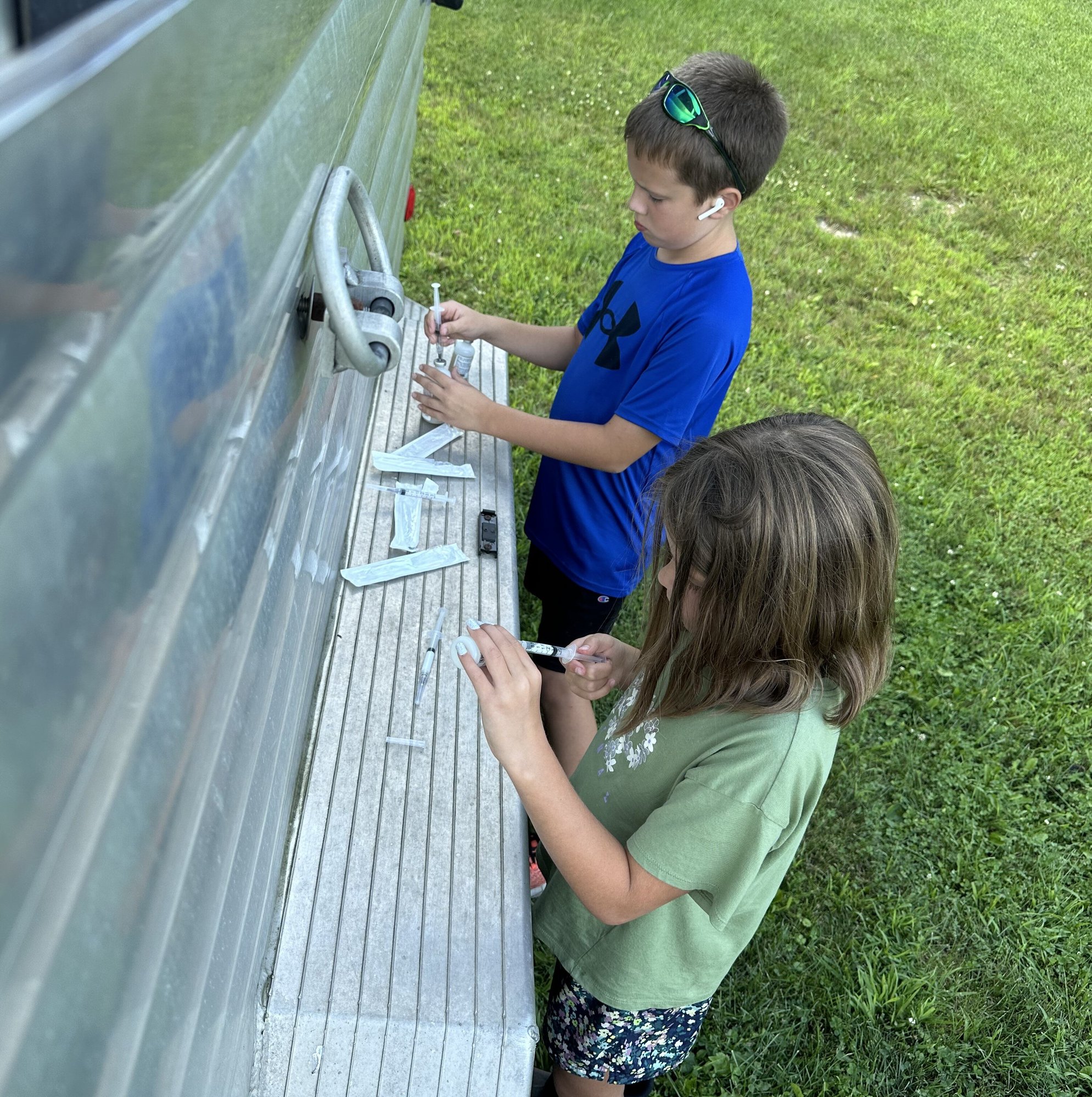
Part of producing healthy lambs is protecting the mothers from disease while they are carrying the lambs. The vaccines we give before the breeding season protect against Vibriosis and Chlamydia (both cause late-term abortions), and Caseous Lymphadenitis (CL), which is a contagious bacterial disease. All sheep in our flock are also vaccinated against Clostridium and Tetanus, but those are given at other times of the year.
We also use CIDRs (controlled internal drug release) to get the ewes ready for breeding season. By releasing controlled amounts of progesterone (similar to IUD’s), these help the ewes' bodies get ready to produce a lamb during a controlled time period. This makes lambing season easier on the shepherd by shortening the time period when lambs might be born and helps us produce lambs that are the right ages for county and state fairs in July.
The giant crayon game
Strapping a giant crayon to our ram, Renegade, helps us identify and record breeding dates. These breeding dates will come in handy in January because they tell us when it’s time to move each ewe into her maternity pen and watch for signs of labor. Most lambs will be born 146 days (+/- 3) from these breeding dates, so we’re expecting our first lambs around January 12th, making them ideal ages for market lamb shows (and freezers) in July and August 2025.

Fall fencing

The post-baseball, pre-football, and pre-volleyball season is a great window of time to get kids to "help" do some fencing. Cool days and dry weather made for ideal conditions. No one ever regretted having extra pasture available right?
Fall shearing
These pros can shear a lamb in 25 seconds, we aren't nearly that good yet, but we're getting better with each attempt.
Why do we shear in the fall?
We're trying to be Goldilocks. If wool is too long during winter lambing, things can be a mess and lambs won't find their milk source as easily. If wool is too short, the ewe's will burn too much energy trying to stay warm through the winter. Shearing in October should give us enough wool growth before the really cold months, but not so much to be a problem during lambing.
What went well?
Nobody died, nobody bled much, and everyone ended up with less wool than they started with.
What we'll do different next time
The pros must know something we don't about shearing machines (clippers). We had to clean ours between every ewe to keep them cutting smoothly. There's no way the pros are doing the same.
We also need to learn something about sheep handling to smoothly transition from one side of the sheep to the other and shear efficiently through the neck and shoulders. The pros on YouTube effortlessly move ewes from one position to the next. Kyle looks more like a toddler wrestling a St. Bernard.
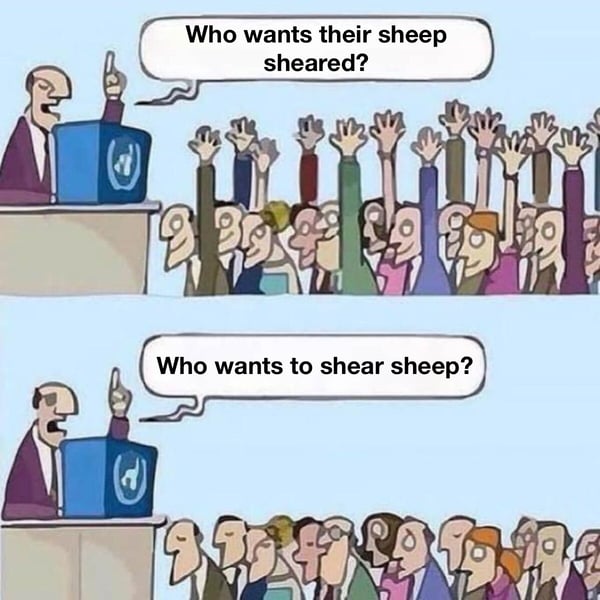
Shed makeover
Making room for January lambing required throwing out some old "treasures" and left over materials we "might use one day". We also built out lambing pens we'll use to give individual care to ewes and lambs their first few days after birth.
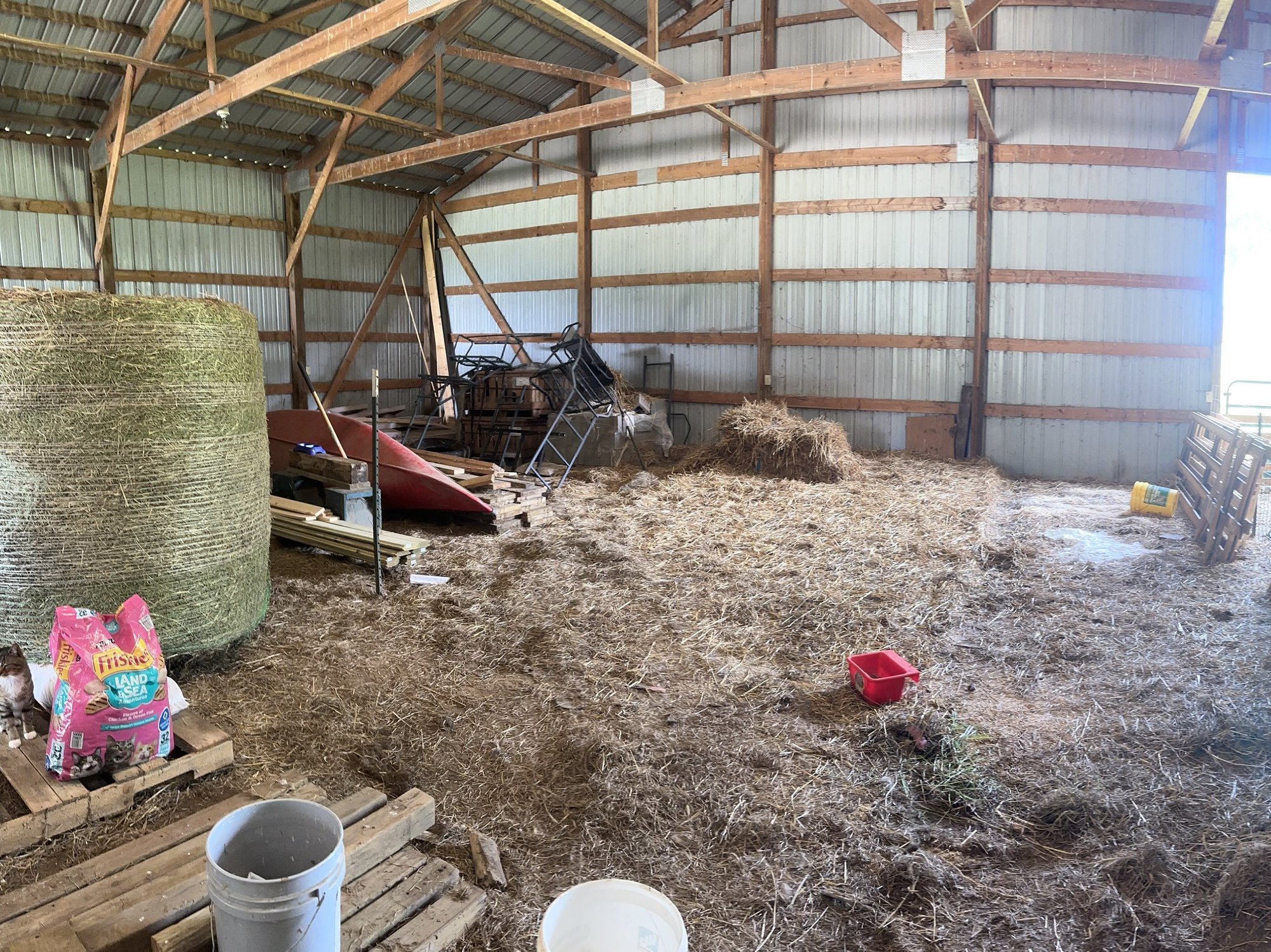
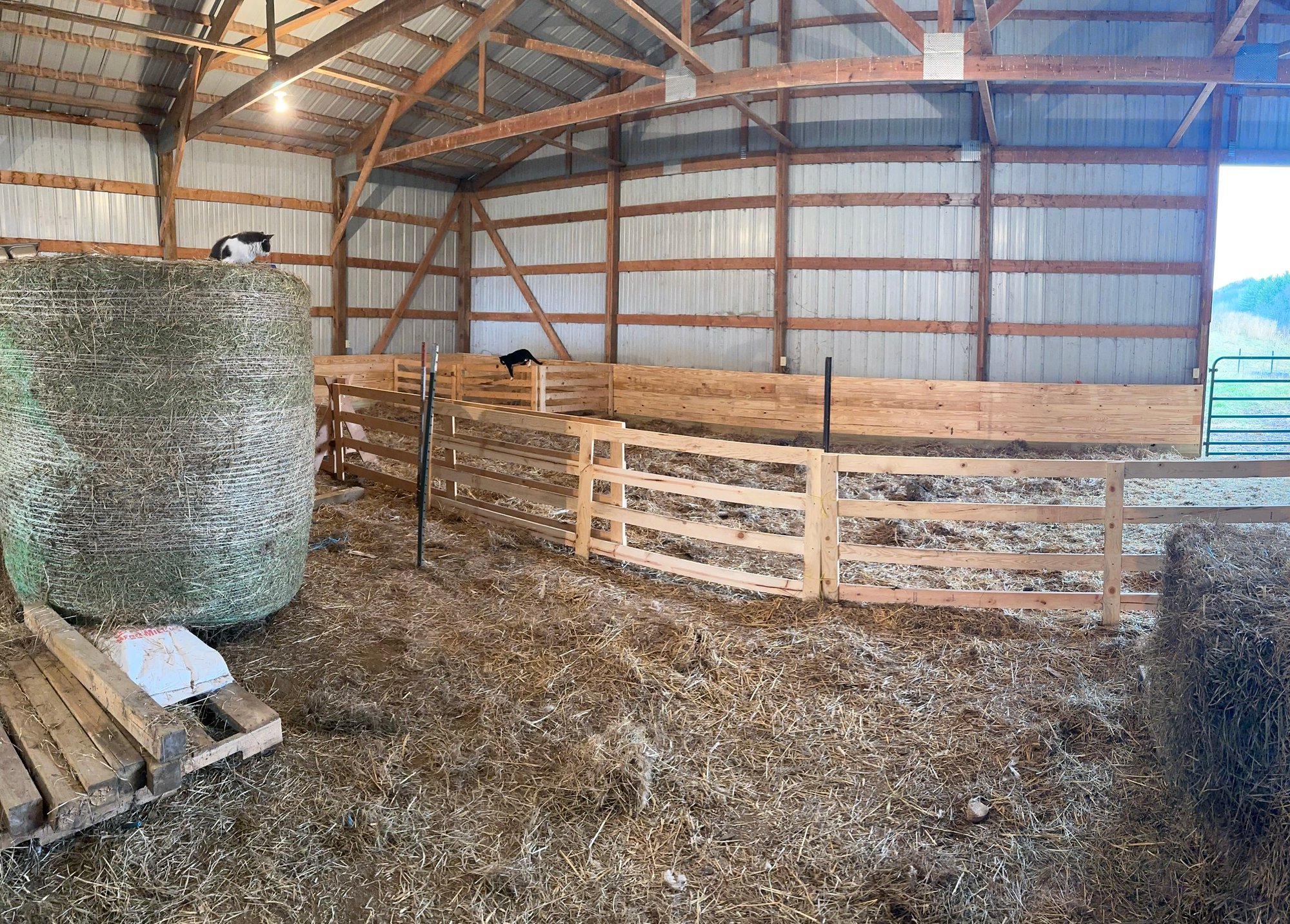
Lamb life -14 to +10 days
Being a baby lamb is more than eating, sleeping, and romping around. It's also a battle against time, organisms trying to kill you, and some management steps specific to life as a club lamb.

-14 days (before birth)
Ewes are vaccinated for CD&T. Several types of clostridia are problematic for lambs including perfringens type C&D and tetani which cause tetanus. Vaccinating ewes at this time passes temporary immunity to the lambs, buying time until their own immune systems are capable of reacting to vaccines for protection.
-3 days
We start watching ewes closely for signs of labor. Tight udders, full of milk are often a clue but can be misleading. Ewes separating themselves from the flock and/or digging aggressively with their front hooves tell us action is beginning and it's time to move the ewe into their individual lambing jug (pen).
.
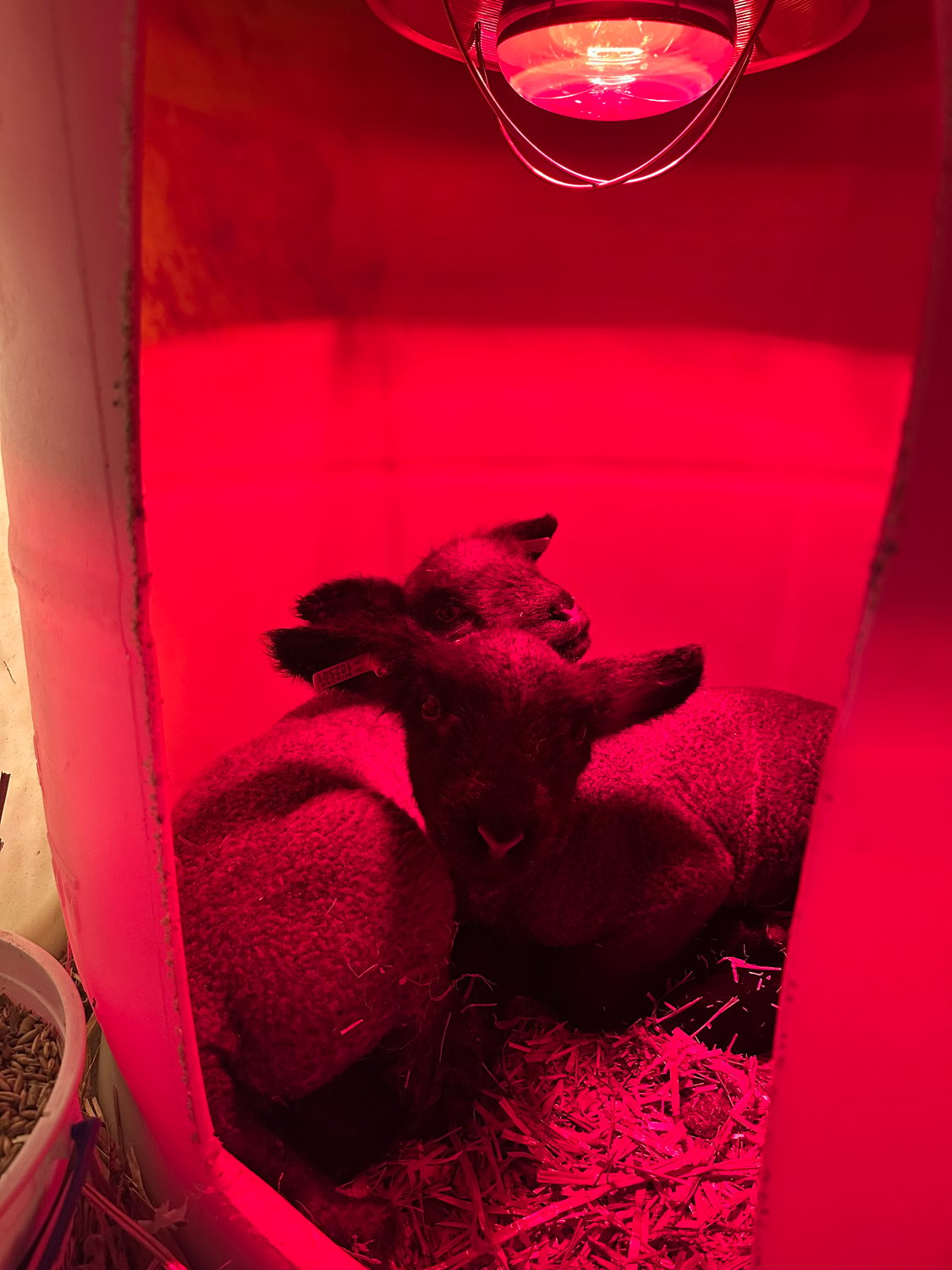
Hour 0
Active labor starts the time period where "surviving is winning" in the life of a lamb. Genetics optimized for being big hipped, strong backed, and heavy boned at maturity are often not optimized for birthing ease, disease resistance, and other features that would make surviving early life easier.
As soon after birth as we find lambs we clip, dip, and strip. This means we clip any extra long umbilical cords, dip the remaining cord in iodine to prevent it from taking in germs from the environment, and strip the keratin plugs that have developed in the mothers teats, so lambs are rewarded with milk on first nursing attempts.
Hour 2
By hour 2 our goal is that lambs are warm, dry (you can't be wet and warm when it's 10 below), and have nursed. A lamb's immune system can absorb key protections from a ewes first milk (colostrum), but absorption ability quickly fades as their immune system changes modes.
Besides immunity, early nursing is a key weapon in the lamb's battle versus time. Born with very little fat in their body, lambs can't sustain their own life long without new calories in warm weather, let alone Wisconsin winters.
Day 3
By day 3 lambs and ewes know how to identify each other, primarily by smell, and are ready to be mixed in with the rest of the flock. Before leaving the lambing jug, every lamb gets a unique ear tag which identifies not only the individual but also the flock it was born into through a federal program designed to track certain diseases.
Day 10
By day 10 each ram lamb is banded, ending their reproductive potential, and preventing the awful smell you'd experience if you ever tried to cook mature ram meat.
Both ram and ewe lambs also have their tails banded. The constriction of these tight rubber bands stops blood flow to the tail, eventually causing it to fall off. There's an argument to make that this is done to keep the sheep cleaner, but it's mostly an aesthetic practice that is necessary for a show lamb to be competitive in the ring.
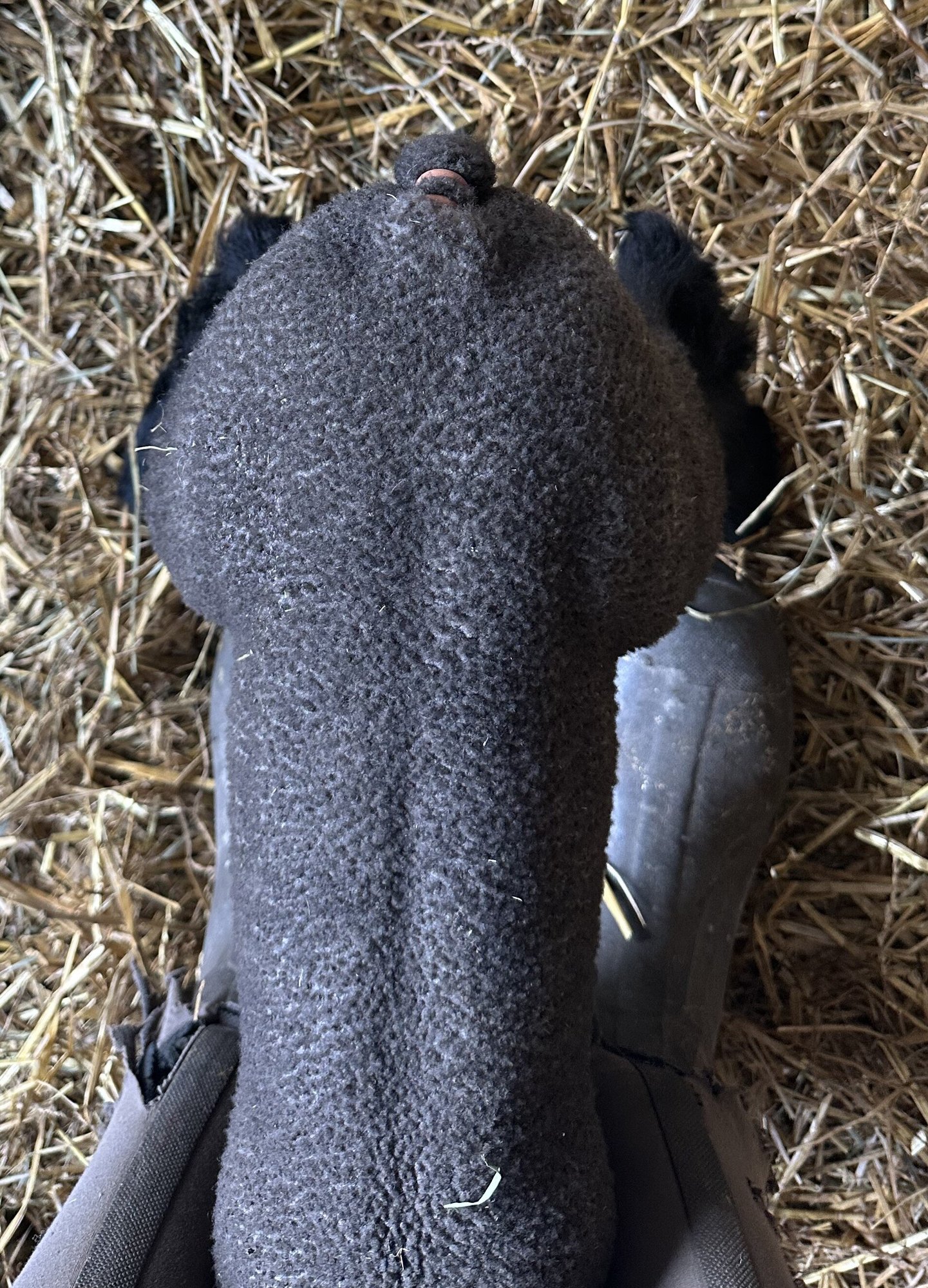
Our best and worst lambing decisions
Best
Lamp boxes
These lamp boxes gave lambs a place to keep warm on cold nights while protecting the fragile lamps from curious and careless ewes with no sense of fire safety.

Menards 43 inch fence rods
These $3 rods combined with a couple eye bolts worked perfect for connecting and anchoring panels on lambing jugs, giving us the option to quickly add and subtract jugs as needed from our limited space.
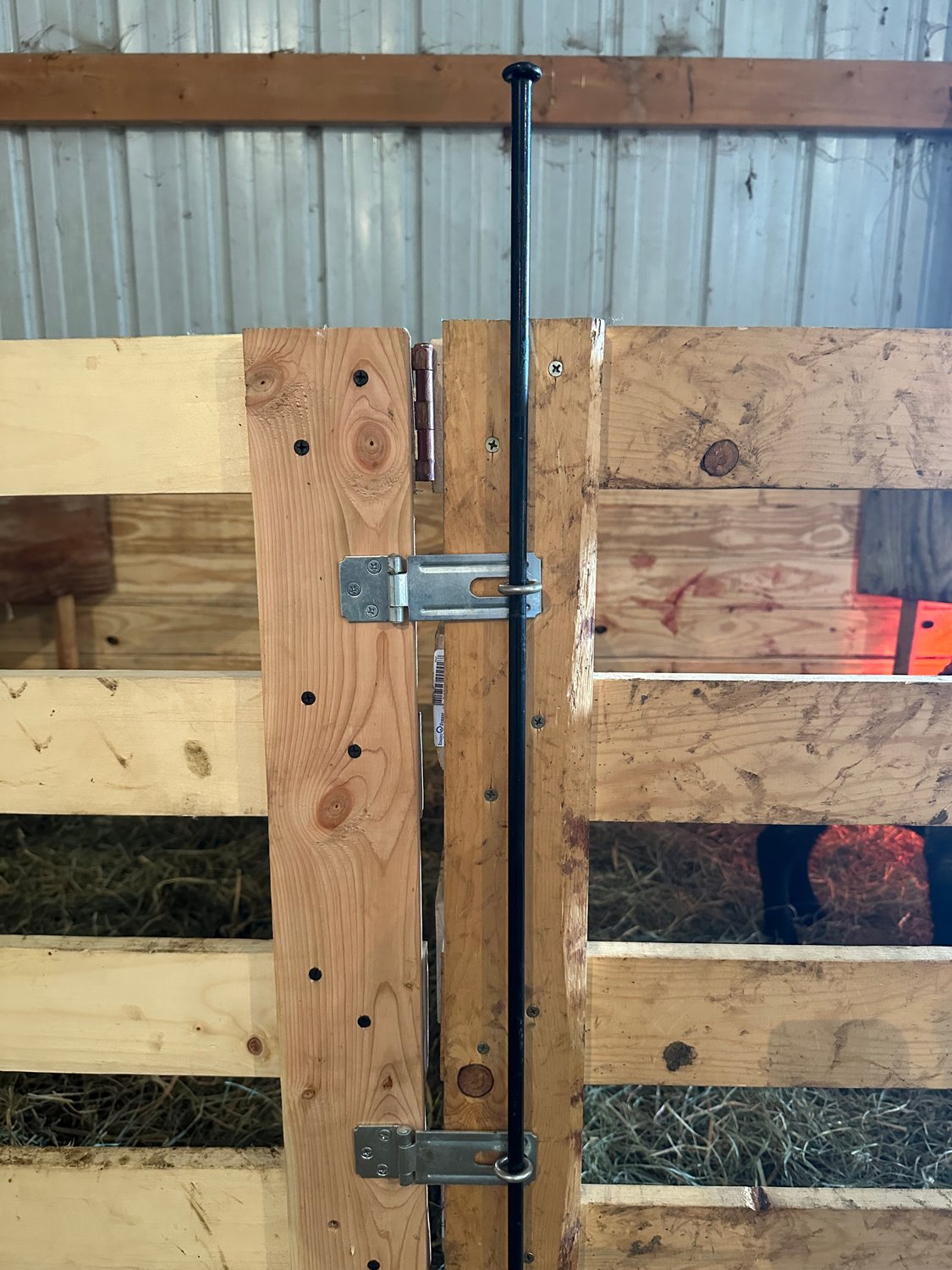
Worst
That extra hour of sleep
"She doesn't look that close," "most ewes won't lamb between 11:00 pm and 2:00 am," and "an extra hour will be fine," seem like reasonable arguments on the 4th night of lambing season, but that one lamb that slips between fence panels into the -15 degree darkness at birth has a different opinion. While we didn't lose a single lamb yet this year, finding a frost covered newborn is enough to reinforce that the extra hour is risky.
36 inch fences with no gates
Why hassle with building gates when its so easy to step over these little panels?
1) 40 year old hip flexors don't think they are so little on the 30th trip into the pen, into the lambing jug, out of the lambing jug, and out of the pen.
2) 4, 9, and 11 year old's have shorter legs.
